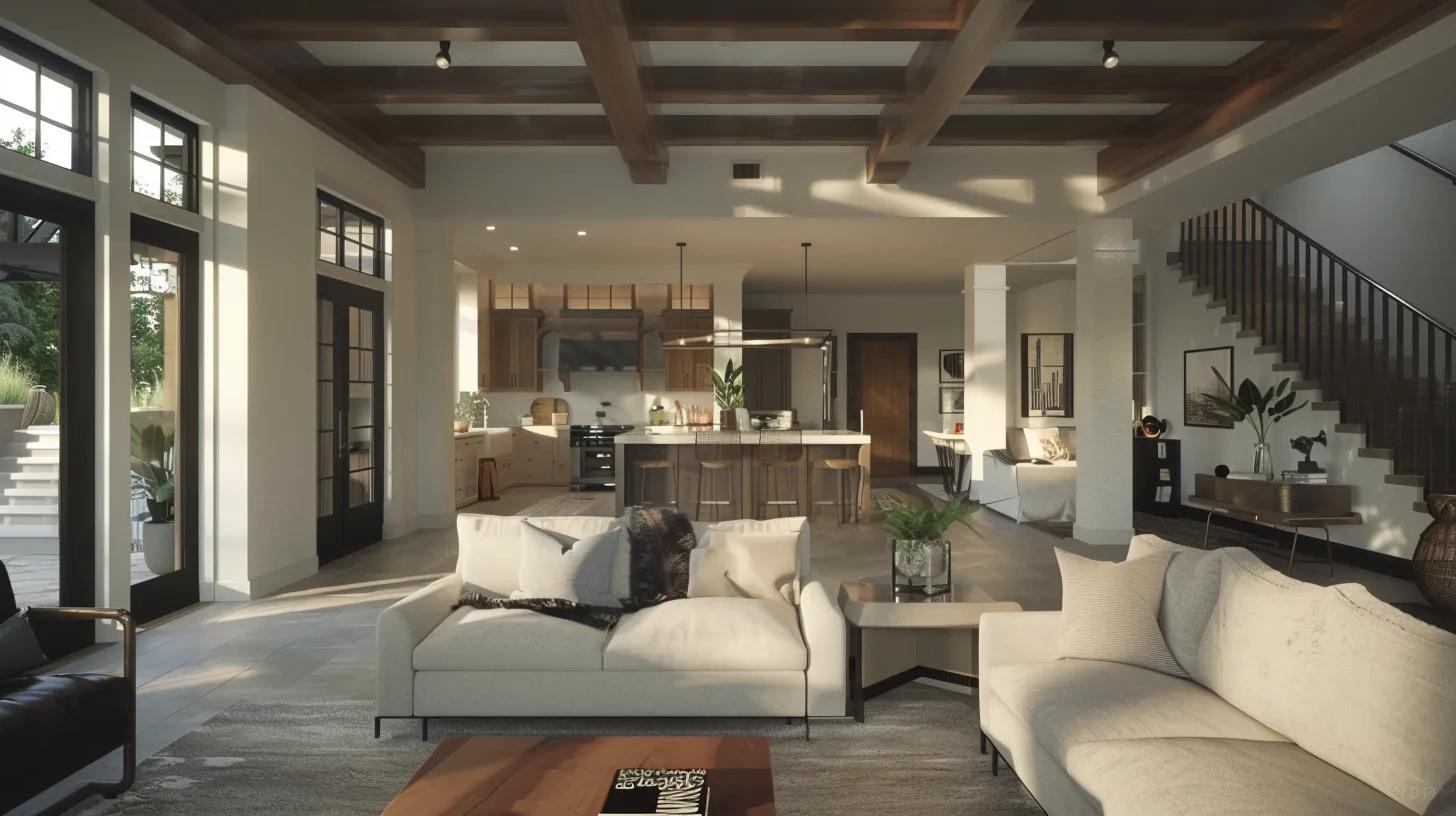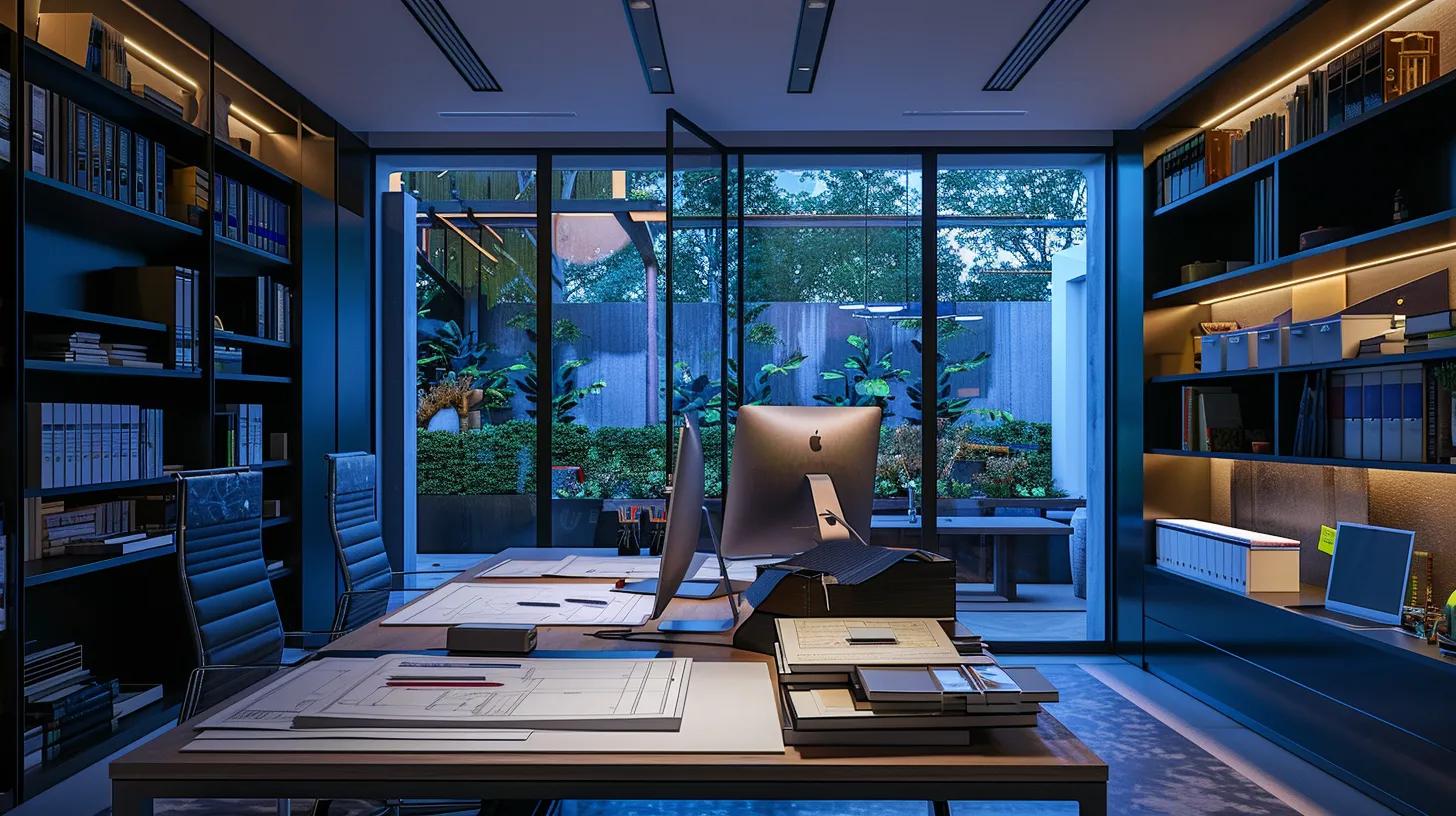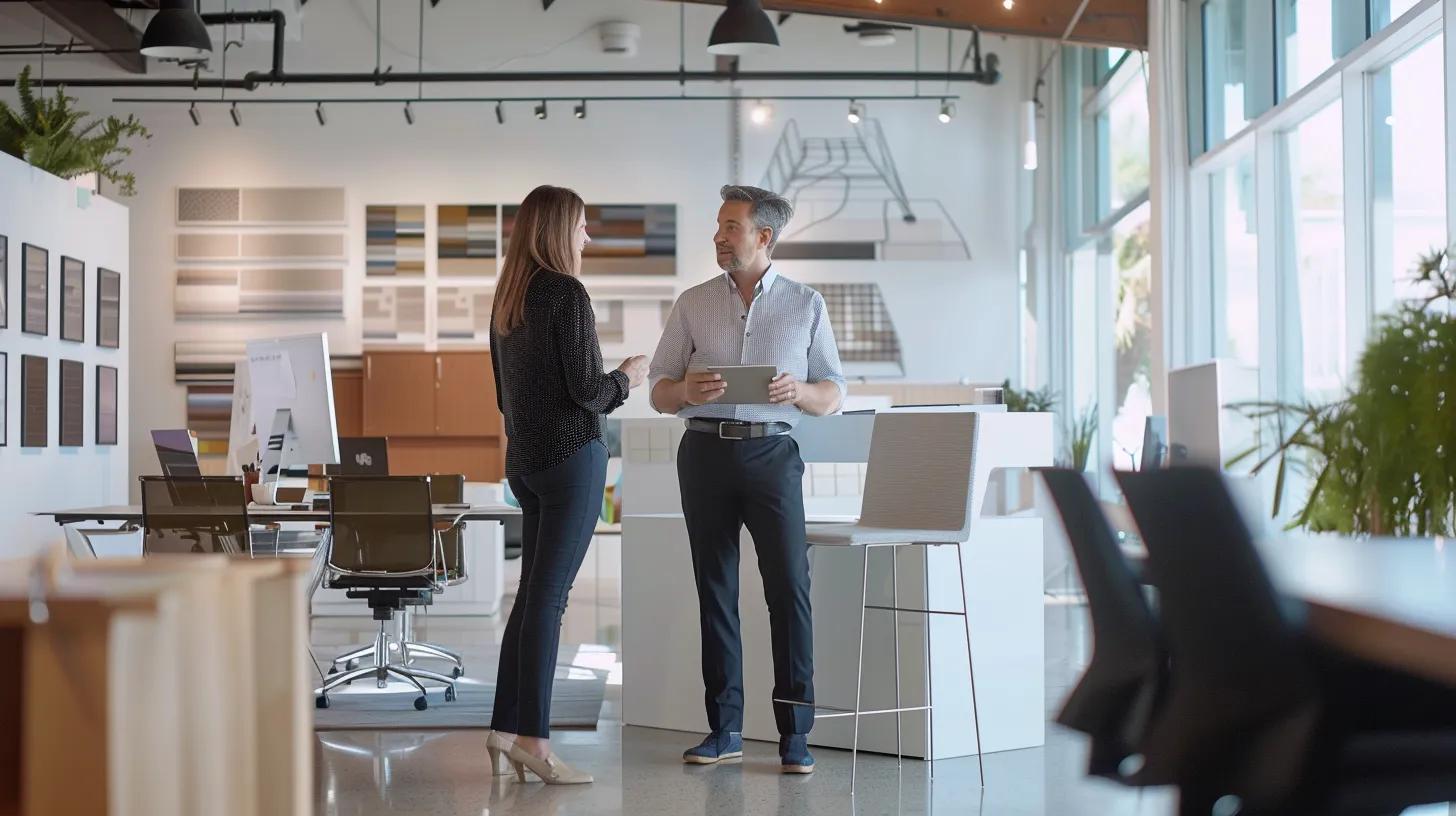
Discover Unique Custom Home Design Options for Every Family
Designing a custom home gives you the freedom to shape your living space around your lifestyle, preferences, and long-term needs. From architectural styles like modern and farmhouse to energy-efficient systems and personalized layouts, custom homes offer endless possibilities. This guide explores the most important design options—covering sustainability, smart technology, outdoor features, and design-build best practices—to help you plan a home that’s both functional and future-ready.
Key Takeaways
Custom home design allows you to match architectural style to your lifestyle.
Sustainable features like solar panels and recycled materials can reduce costs and environmental impact.
Smart home technology enhances comfort, security, and energy efficiency.
Outdoor living spaces add value and expand usable square footage.
The design-build process ensures better coordination from concept to construction.
Choosing the right builder is essential to delivering your vision on time and on budget.
What Are the Key Custom Home Design Styles to Consider?

When planning your custom home, you’ll find no shortage of new build house design options for every family. From sleek modern layouts to timeless Craftsman details or rustic farmhouse charm, today’s home styles are as diverse as the families they serve. These customizable options empower homeowners to choose a design that reflects both their lifestyle and personal aesthetic.
What Defines Modern and Contemporary Home Designs?
Modern and contemporary designs use clean lines, neutral color palettes, and simple layouts. Large windows and geometric forms create airy, bright interiors. Materials like concrete, steel, and glass are common, emphasizing functionality and a minimalist aesthetic that works well with smart home automation and modern appliances.
How Do Craftsman and Farmhouse Styles Differ in Custom Homes?
Craftsman and farmhouse styles focus on warmth and tradition. Craftsman homes highlight quality craftsmanship with built-in features, low-pitched roofs, and detailed woodwork. Farmhouse designs stress rustic simplicity with open porches and reclaimed wood accents. Both styles use natural materials but differ in detailing and spatial organization, appealing to those looking for history and homey charm.
Which Architectural Style Best Fits Your Lifestyle and Preferences?
The right style depends on personal taste and practical needs. Modern minimalism might suit a tech-savvy professional, while a traditional farmhouse can offer warmth for a family. Evaluating priorities such as energy efficiency, sustainability, and maintenance helps homeowners select a design that reflects their personality and supports long-term comfort.
How Can Sustainable Design Enhance Your Custom Home?
Sustainable design goes beyond aesthetics—it's about creating a home that’s energy-efficient, environmentally responsible, and built for long-term performance. By incorporating green materials, smart technologies, and efficient systems, you can reduce your carbon footprint while increasing comfort and property value. A thoughtfully designed sustainable home supports healthier living and lower utility costs.
What Are the Benefits of Using Eco-Friendly Building Materials?
Eco-friendly materials such as reclaimed wood, recycled steel, bamboo, and low-VOC paints improve indoor air quality, reduce construction waste, and minimize environmental impact. These materials are often more durable and require less maintenance over time, making them a smart investment for both the planet and your budget.
How Do Energy-Efficient Systems Improve Home Performance?
Integrating systems like solar panels, high-efficiency HVAC units, and well-insulated building envelopes helps reduce energy loss and utility expenses. Smart thermostats, energy-efficient lighting, and monitoring tools allow you to track and manage consumption in real-time, maximizing comfort and sustainability throughout the year.
What Green Building Certifications Should You Look For?
Certifications such as LEED, Energy Star, and Passive House signal that your home meets rigorous sustainability standards. These programs evaluate everything from energy use to material sourcing and indoor air quality. In many cases, certified homes qualify for financial incentives like rebates or tax credits.
Why Choose a Builder Specializing in Sustainable Design?
A builder with a background in sustainable construction understands how to seamlessly integrate eco-conscious practices into your home from day one. They can recommend the right renewable energy systems, suggest efficient materials, and ensure your project aligns with green building codes and performance standards. Their expertise helps you achieve a home that is both stylish and environmentally sound.
What Essential Home Features Should You Include in Your Custom Design?

Essential features should blend functionality with style. Custom elements can be tailored to your needs, from automation systems to outdoor living areas that extend your living space.
How Does Smart Home Technology Integrate Into Custom Homes?
Smart home systems centralize control of lighting, security, and climate features through the internet. They improve convenience and energy efficiency by allowing remote management and real-time adjustments. Such systems reduce energy waste and add an extra layer of security and comfort.
What Are the Benefits of Outdoor Living Spaces?
Outdoor living areas, including patios, decks, and fire pits, extend indoor comfort outdoors. They add value, provide space for relaxation and social gatherings, and use durable, weather-resistant materials. Spending time in these spaces can also help reduce stress and boost well-being.
How to Design Custom Kitchens and Bathrooms for Function and Style?
Custom kitchens and bathrooms are designed for both beauty and utility. Open layouts, quality materials like granite countertops and porcelain tile, and integrated smart appliances create spaces that are both functional and inviting. Features such as deep drawers, energy-efficient lighting, and optimized plumbing fixtures help blend luxury with everyday convenience.
What Is the Custom Home Design-Build Process You Should Expect?
Understanding the design-build process is essential. It covers everything from initial planning to final construction, ensuring clear communication and timely project delivery.
What Happens During the Design Phase of a Custom Home?
During the design phase, architects and designers work together to capture the homeowner’s vision. This includes consultations, conceptual sketches, and detailed plans covering floor layouts, material selection, and sustainability features. Multiple revisions help ensure that the final blueprint meets the budget and style requirements.
How Is the Construction Phase Managed for Custom Homes?
The construction phase involves close coordination among site managers, contractors, and designers. Regular meetings, quality inspections, and clear communication channels help prevent delays and keep the project on track. Every step, from foundation work to finishing touches, is managed diligently to meet high quality and safety standards.
What Project Management Practices Ensure a Smooth Build?
Effective project management using tools like construction software, daily progress reports, and integrated scheduling ensures a seamless build. These practices help coordinate all teams, provide real-time updates, and maintain strict quality control and budget monitoring.
How Much Does It Cost to Build a Custom Home With Your Preferred Design Options?

Custom home costs vary by location, materials, and design complexity. Accurate budgeting requires understanding all cost factors and planning accordingly.
What Factors Influence Custom Home Design Pricing?
Pricing depends on the home's size, material quality, labor costs, and design details such as luxury countertops or smart home integrations. Additional expenses include site preparation, permitting fees, and designer fees, making thorough planning critical.
How Can You Budget for Sustainable and Energy-Efficient Features?
While eco-friendly systems and materials may have higher upfront costs, they offer long-term savings on energy bills and maintenance. Budgeting should include the benefits of tax incentives, rebates, and lower future costs, balancing initial investments with long-term gains.
What Financing Options Are Available for Custom Home Projects?
Custom home financing typically includes construction-to-permanent loans, green mortgages for energy-efficient builds, and private financing tailored to unique design needs. It's important to work with lenders or financial advisors who understand the complexities of custom builds. They can help you navigate budgeting, timelines, and eligibility requirements to secure the best loan structure for your project.
What Are the Latest Trends in Custom Home Design You Should Know?
Recent trends blend cutting-edge technology with eco-friendly practices, creating homes that are both stylish and sustainable. Modern homes now often feature open floor plans and seamless transitions from indoor to outdoor spaces.
Why Are Open Floor Plans and Indoor-Outdoor Living Spaces Popular?
Open floor plans remove barriers between spaces, creating a fluid connection between indoor and outdoor areas. Features like sliding glass doors and retractable walls allow more natural light and flexible living arrangements, catering to active social lifestyles.
How Is Technology Shaping Modern Custom Homes?
Advancements in IoT devices allow integrations of smart appliances and home automation. With smart thermostats, automated window shades, and intelligent lighting, technology enhances the functionality and energy efficiency of the home while adding convenience and security.
What Role Do Eco-Friendly Materials Play in Current Designs?
Eco-friendly materials such as bamboo flooring, recycled metal, and low-emission insulation are increasingly popular. They offer environmental benefits, support sustainability, and add unique textures and warmth to a space without compromising on style.
How Do You Choose the Right Custom Home Builder for Your Design Options?

Selecting the right builder is one of the most critical steps in a successful custom home project. The builder you choose should align with your design goals, whether you're aiming for a sustainable build, a modern layout, or a highly personalized space. Start by researching local firms, reviewing portfolios, and conducting interviews to assess experience and compatibility. Look for a builder who communicates clearly, delivers high-quality work, and understands your vision.
What Questions Should You Ask Potential Builders?
Can you show examples of similar custom homes you’ve built?
What experience do you have with energy-efficient or sustainable designs?
How do you manage budgets, timelines, and subcontractors?
What type of warranty do you offer?
Can you provide recent client references or testimonials?
These questions help assess not just technical skill, but also reliability, transparency, and project management capability.
How Can You Verify a Builder’s Expertise in Sustainable and Modern Designs?
Look for certifications such as LEED, Energy Star builder status, or Passive House experience. Reviewing past projects—especially those featuring smart systems, open layouts, or eco-friendly materials—can confirm their expertise. Site visits and conversations with former clients also offer valuable insights into the builder’s process and results.
What Are the Benefits of a Full-Service Design-Build Approach?
A design-build model brings architecture, design, and construction together under one team. This approach simplifies communication, reduces delays, and ensures a smoother workflow. With one point of contact, you gain better control over quality, cost, and schedule—making it easier to adjust for unforeseen changes without derailing the project.
Conclusion
A well-designed custom home is more than just a place to live—it’s a reflection of your lifestyle, values, and future goals. Whether you prioritize smart technology, eco-friendly systems, or a specific architectural style, thoughtful planning is key. By understanding your options and working with a builder experienced in modern and sustainable design, you can create a home that delivers lasting comfort, efficiency, and personal satisfaction.
Frequently Asked Questions
What are the benefits of using smart home technology in custom homes?
Smart technology automates lighting, climate control, and security systems. It improves convenience, reduces energy usage, and allows remote control of various home functions.
How do sustainable materials improve a custom home?
Eco-friendly materials reduce environmental impact and often last longer. They help improve indoor air quality and may qualify your home for energy efficiency rebates or certifications.
What financing options are available for custom home builds?
Options include construction loans, green mortgages, and specialized financing for energy-efficient homes. A financial advisor or lender with experience in custom projects can help you choose the best path.
How can I ensure my custom home meets today’s standards?
Work with a builder who specializes in current trends like open floor plans, energy-efficient features, and smart tech. Look for certifications and a strong portfolio of modern builds.
Why include outdoor living spaces in a custom design?
Outdoor areas such as patios and decks extend your usable space, support social gatherings, and add comfort. They also increase your home’s value and encourage more time spent outside.


